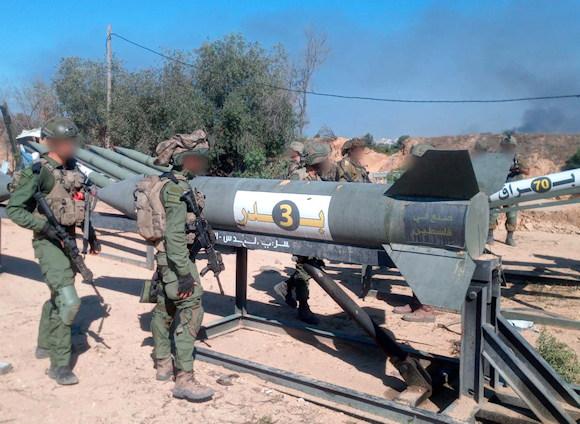That an asymmetric conflict is being fought between Israel and Hamas is evident even just in the subjects involved: a sovereign state of law against an armed terrorist group, albeit one with significant numbers and war equipment. The same goes for the other enemies who are currently putting the Jewish State under attack, in various forms and from other areas: Hezbollah to the north, from Lebanon, and the Houthis from the south, from Yemen to the international waters of the Red Sea, both pro-Iranian. A war on multiple fronts for Israel, against a trio of generically defined actors non-statal ma in fact with war potential, training, support, but above all determination and ideological drives, typical of sovereign state entities.
Although Jewish defense doctrine, since Israel's origins, has relied heavily on technological superiority as a means to counter its numerical inferiority, asymmetry and deterrence with its current enemies are no longer obvious factors to its total advantage, given that they have been pursuing, for some time, a strategy designed precisely to neutralize technological superiority as a deterrent factor. And Israel's choice, in recent years, to favor the maintenance of the existing status quo in security matters, focusing on defense so as not to substantially change the strategic situation, has actually ended up benefiting Hamas and Hezbollah. In fact, one of the final objectives of advanced technological defense systems, such as the Jewish one, is to provide a complete operational picture, 24 hours a day, in real time or at a given moment, of the battlefield: this has resulted in the provision of advanced detection systems capable of guaranteeing continuous coverage, better data compression and transmission techniques, also with the use of artificial intelligence to support the decision-making process.
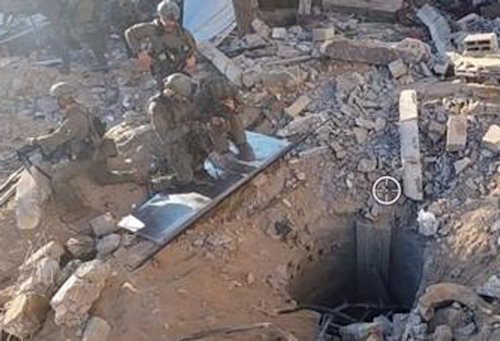 However, there are weaknesses: tracking systems can be countered with simple measures, such as drones and small explosive devices, and the sensors, even if advanced, have a limited capacity in bunkers and tunnels, in addition to what has already been highlighted as Hamas' "surprise operations" on 7 October last year regarding a successful attack on military information and communication networks, which were effectively blinded and silenced. Furthermore, and it is known, asymmetric conflicts are characterized by a growing involvement of civilian populations, erasing the distinction between the front line and the internal front: it follows that, by directing attacks against non-combatants - and Hamas has done this for years with communities along the border with Gaza, between armed sorties from the tunnels, balloons and incendiary kites – the side of the conflict that holds the technological disadvantage – Hamas, in this specific case – has aimed to erase the asymmetry, because it has made it much more difficult for Israel exploit your technological advantage.
However, there are weaknesses: tracking systems can be countered with simple measures, such as drones and small explosive devices, and the sensors, even if advanced, have a limited capacity in bunkers and tunnels, in addition to what has already been highlighted as Hamas' "surprise operations" on 7 October last year regarding a successful attack on military information and communication networks, which were effectively blinded and silenced. Furthermore, and it is known, asymmetric conflicts are characterized by a growing involvement of civilian populations, erasing the distinction between the front line and the internal front: it follows that, by directing attacks against non-combatants - and Hamas has done this for years with communities along the border with Gaza, between armed sorties from the tunnels, balloons and incendiary kites – the side of the conflict that holds the technological disadvantage – Hamas, in this specific case – has aimed to erase the asymmetry, because it has made it much more difficult for Israel exploit your technological advantage.
But there is a further strategic and difficult dilemma for Israel and it derives from the lessons learned from its military history. In fact, although technological supremacy is, and will remain, one of the factors of the most important modus operandi of the IDF, the war against terrorist organizations that employ such tactics, such as Hamas or Islamic Jihad, has shown how full control of the enemy territory. In short, that boots on the ground which, beyond any other international political and legal consideration, may be feasible for territories such as Gaza or the West Bank, but could hardly be used against Hezbollah and Houthis, unless there is a broader regional conflict with countless unknowns. And this is what Israel's current enemies are banking on.
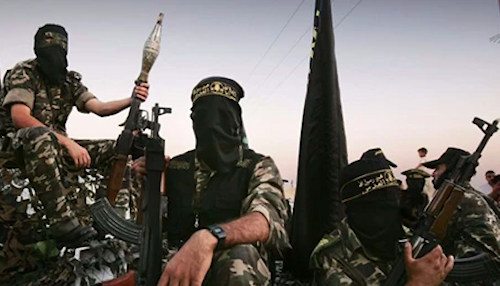
Then there is the other front, southern Lebanon. Following the continuous attacks of the last month, the Jewish objective, officially declared, is the elimination and/or movement of the enemy Hezbollah further inside Lebanon, beyond the Litani River, as already foreseen by UNR1701 (2006) , with inevitable collateral damage, also considering the fact that a Lebanese wing of Hamas is operational, located by the IDF in the city of Tire1.
Hezbollah has long followed operational principles such as the creation of a balance of deterrence against Israel, precisely with in-depth attacks on civilian targets (missiles, rockets and UAVs), for which for weeks they have been engaging the IDF with missile launches and shipments of drones (Iranian Ababil T2s), to which the IAF responds with a massive offensive of precision attacks (operational headquarters, infrastructures, hideouts of important exponents) and rapid multi-formation ground maneuvers, to access and damage the centers of severity of Hezbollah, both in southern Lebanon and, for a long time, in Syrian territory, beyond the Golan Heights.
Hezbollah would no longer have the vast network of tunnels, destroyed in a Jewish air offensive in 2018-2019. However, as with Gaza, it hides its arsenals in population centers and Israel's firepower against these targets would inflict enormous collateral damage. Containing Hezbollah, therefore, as a hybrid, tenacious and elusive force would not be easy for Israel, despite its undoubted technological advantage.
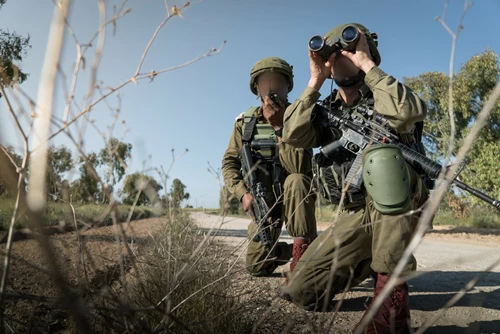 A massive Israeli offensive on this front is, at the moment, shelved, for obvious reasons of strategic priority, although it is not ruled out in the event of regional escalation. However, it would be a question of implementing a completely different operation from the one currently underway in Gaza with Hamas, given the difficult conformation of the border terrain (mountainous, narrow and impervious roads, rivers, with the risk of sabotage of the bridges to slow down the advanced).
A massive Israeli offensive on this front is, at the moment, shelved, for obvious reasons of strategic priority, although it is not ruled out in the event of regional escalation. However, it would be a question of implementing a completely different operation from the one currently underway in Gaza with Hamas, given the difficult conformation of the border terrain (mountainous, narrow and impervious roads, rivers, with the risk of sabotage of the bridges to slow down the advanced).
The amphibious landing on Lebanese territory has also always been rejected by the Jewish military authorities. On 6 June 1982, at the start of the Peace in Galilee operation, in a sort of Israeli D-day, a significant landing took place (the Shayetet 13, at the mouth of the Awali river and on the Lebanese beach), with a strategic advantage which, however, the Jewish political leadership was unable to fully exploit. Over the years, however, budget constraints and a lack of experience in a complicated field, which requires close cooperation between air, sea and land units, have put the IDF away from ever using the maritime approach again. Additionally, Hezbollah strongholds are located in Dahiyeh, a suburb of Beirut, 55 miles north of the Israeli border. The last time the IDF reached Beirut by land was in 1982, taking about a week: times now unsustainable for the other commitment on Gaza and then, beyond all considerations of political expediency, for the risk of widening the conflict. This did not, however, prevent the IAF fighters from flying over the Lebanese capital in these hours.
And then there is the presence of UNIFIL, although it is not militarily relevant for either of the contenders, but it holds at least a diplomatic balancing role for both.
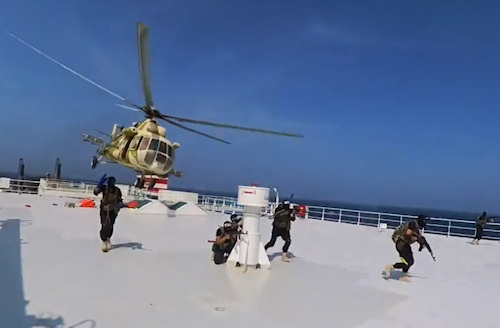 On the southern front, the extreme one in the Negev, there is another new threat to Israel, the Houthis. These people, in addition to the missile attacks towards Eilat, were protagonists in the seizure of the Galaxy Leader and its crew in the Red Sea: a merchant ship, without cargo, owned by Israel, with a crew of various nationalities, in an operation that was more of maritime piracy than actual warfare, in spite of an attempt at international deterrence with the deployment of US ships and a couple of Jewish units (a guided missile submarine and a corvette). However, doubt remains whether the ship served as a lookout for a cargo ship Iranian moored in those waters for some time and suspected of being a floating outpost of Iranian intelligence in a strategic area such as the Bab el-Mandeb Strait and Djibouti, with all its foreign military bases.
On the southern front, the extreme one in the Negev, there is another new threat to Israel, the Houthis. These people, in addition to the missile attacks towards Eilat, were protagonists in the seizure of the Galaxy Leader and its crew in the Red Sea: a merchant ship, without cargo, owned by Israel, with a crew of various nationalities, in an operation that was more of maritime piracy than actual warfare, in spite of an attempt at international deterrence with the deployment of US ships and a couple of Jewish units (a guided missile submarine and a corvette). However, doubt remains whether the ship served as a lookout for a cargo ship Iranian moored in those waters for some time and suspected of being a floating outpost of Iranian intelligence in a strategic area such as the Bab el-Mandeb Strait and Djibouti, with all its foreign military bases.
At least since 2019, the seizure of ships as well as the use of mines (off the coast of the UAE) or the direct attack with kamikaze drones (Gulf of Oman) are certainly no longer new for Tehran in all the waters around the Arabian Peninsula , with what this entails in terms of security for all global commercial traffic. Attacks that demonstrate a lack of deterrence for the rest of the international community, also in the face of a lack of reactions and countermeasures against numerous Iranian provocations, whereas Iran and its proxies know they can wait and decide when and where to attack in a huge area of ocean, crossed by tens of thousands of merchant ships Worldwide. And now, it seems, is the time for Israeli-owned ships.
Another treacherous and elusive challenge, therefore, to security, and not just Jewish, to which we must respond in order not to be overwhelmed and which, perhaps, Israel will be able to face by showing off, this time, its technological supremacy without fearing collateral damage or imposing itself with boots on the ground. However, when the enemy is a sub-state entity and is not governed by international rules and standards that apply to states, it is difficult to translate operational success into political outcomes, and direct political-military linkage, in this type of asymmetric conflict, tends to be blurry, unless the Jewish approach is applied to all of them, which is now the one against Hamas, of "dismemberment of the enemy system" and the conflict spreads to the proxy states of these terrorist groups.
1 On 21 November, his deputy commander Khalil Kharaz was identified and killed in a targeted attack, together with three other terrorists.
Photo: IDF/X

